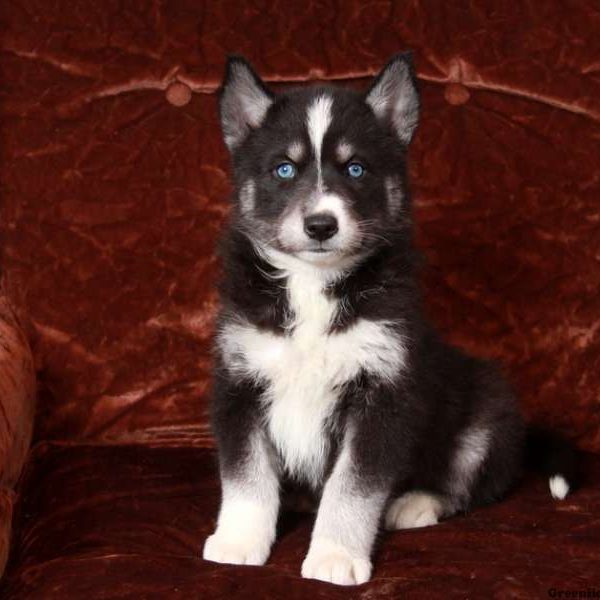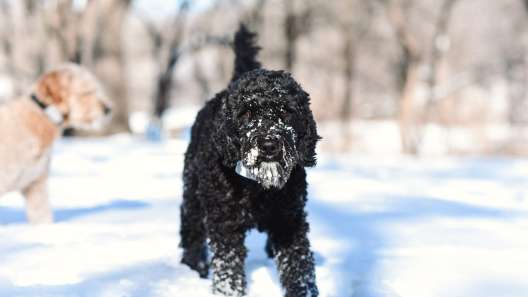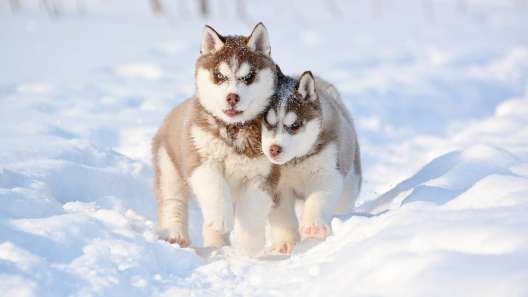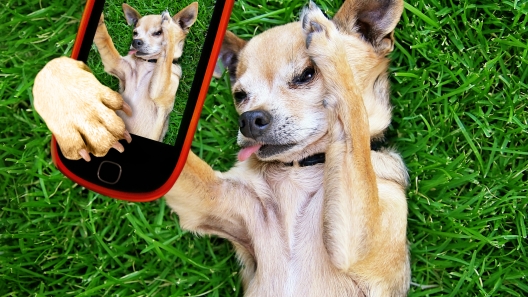
-
Activity Level:
high
-
Shedding Level:
moderate
-
Grooming Level:
moderate
-
Trainability:
moderate
-
Good for Novice Owners:
moderate
-
Adaptability:
moderate
-
Kid/Pet Friendly:
sometimes
-
Prey Drive:
high
-
Watchdog:
very alert
- Average Size: Medium
- Average Lifespan: 12-15 years
Siberian Samoyed Dog Breed Information
Overview
Temperament
Adaptability
Health
Owner Experience
Grooming
Activity Level
Size
Life Span
The Siberian Samoyed is a cross between a Siberian Husky and a Samoyed. They are also sometimes called a Samusky, Samoyed Husky, or, simply, a Samoyed Husky Mix. They tend to be lively, energetic, and playful dogs that love their families. Their fluffy appearance and comedic antics are sure to fill your life with plenty of cuddles and laughs.
A Siberian Samoyed is loyal and devoted to their families. They are energetic, playful, and can be mischievous. They tend to get along well with other dogs and children as long as they know how to properly interact with a dog. This may make them a better fit for families with older children.
They do tend to have a high prey drive, so they will need extra socialization and training when it comes to other smaller pets in the household. They can be aloof with strangers, but do tend to warm up once introduced.
A Samusky will be a vocal dog. You can start to train your dog to stop barking to keep barking from becoming a nuisance behavior. But, they will still make little vocalizations to “talk” to you.
Samoyed Huskies are moderately adaptable dogs. Because of their energy, high prey drive, and urge to wander, these dogs are best suited for homes with securely fenced yards. They do well in cold weather, but are sensitive to heat. They also get bored easily and do not like to be left alone for long periods of time.
Potential health conditions to be aware of in a Siberian Samoyed include hip dysplasia, cataracts, hyperthyroidism, Diabetes Mellitus, progressive retinal atrophy, and corneal dystrophy.
Reputable breeders will screen their dogs to avoid passing genetic issues on to puppies. So, don’t be afraid to ask the breeder about the genetic and health history of both of the parents. You can also ask about any health tests or clearances that have been done.
Siberian Samoyeds are highly intelligent dogs that pick up on things quickly. But, they are also high-energy working dogs that get bored easily and can also be stubborn. This can be a challenge for first-time dog owners, so puppy training classes are recommended.
Puppy training classes tend to be a good idea for everyone, regardless of their experience with dogs. Not only do these classes help structure and reinforce the training you are doing at home, but they also help strengthen the bond you have with your Samusky puppy. On top of that, they often offer opportunities to socialize a puppy.
A Siberian Samoyed has a thick double coat. They will shed year-round and will shed a lot twice a year as seasons change. Daily brushing and the occasional bath as needed will help keep this dog comfortable and their coat healthy.
In addition to coat care, you will also need to care for your Siberian Samoyed’s nails, ears, and teeth. Cutting your dog’s nails once or twice a month keeps them from growing too long. Checking ears weekly with careful ear cleaning as needed can help prevent ear infections.
Brushing teeth or using an enzyme toothpaste every day in addition to cleanings at the vet as needed is ideal dental care for dogs. Starting a good dental care routine early and maintaining can help prevent painful dental diseases later in life.
A Siberian Samoyed is a high-energy dog breed with a working dog background. In addition to needing a job to do, they also require daily walks plus playtime, extra activity, and some time to run to be happy and healthy.
They will likely be up for more activity if you are and you might run out of energy before they do. The good thing is that they are versatile and athletic dogs. So, once Samoyed Husky puppies finish growing and developing, you can try a ton of different things to help them get enough exercise. Who knows? You could end up finding your new favorite activity!
A fully-grown Siberian Samoyed usually stands 20-24 inches tall and weighs 45-60 pounds.
Siberian Samoyeds generally live for 12-15 years.









